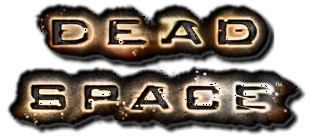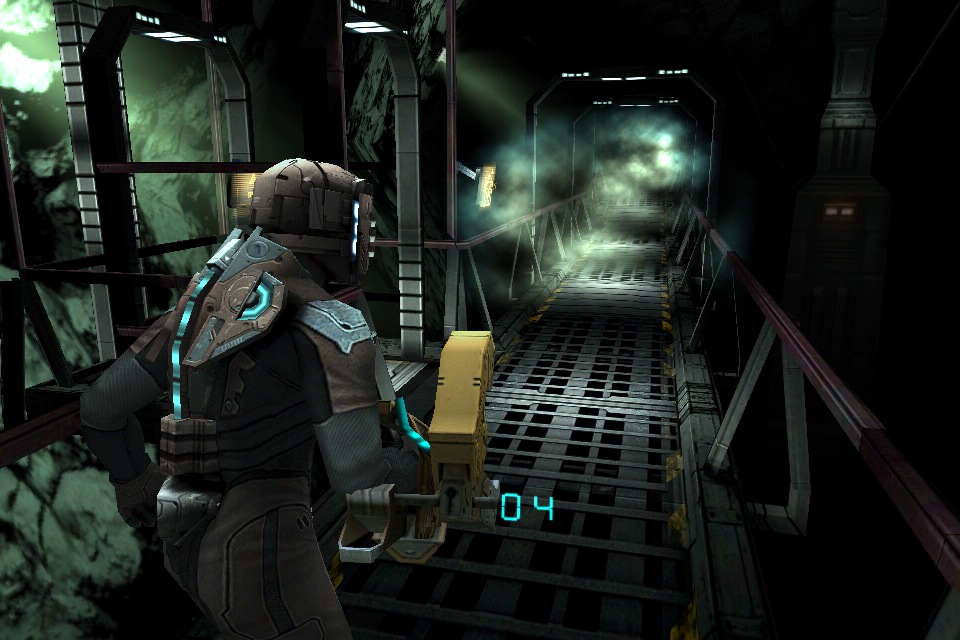Friday, March 18, 2011
Thursday, March 17, 2011
Server 2008 Backup issues with Linux NAS devices
Ran into this issue today when setting up Server 2008 backup.
I had to backup the entire volume since i did not have access to the NAS device to change the configuration.
Symptom:
You try to backup the files and folders on a windows server 2008 R2 system, the backup target is a share folder created in a storage drive on NAS device running Linux system. After starting the backup and taking several minutes, error message will appear “the backup of volume xxx could not be completed, Error: the version does not support this version of the file format.” The backup operation stopped before completing.
Before clarify the root cause of this problem, we should first let you know a background of windows server backup
Background:
The windows backup will have problems with sparse file only in case of "File Level (Selected file/folders in a volume)" backup. For "Block Level (full volume)" backup the sparse file is not a problem and the backup/recovery would succeed. This is because for Block Level Backup the .vhd file is never mounted whereas for File Level Backup the .vhd is mounted which does not support mounting of sparse file.
The windows backup will have problems with sparse file only in case of "File Level (Selected file/folders in a volume)" backup. For "Block Level (full volume)" backup the sparse file is not a problem and the backup/recovery would succeed. This is because for Block Level Backup the .vhd file is never mounted whereas for File Level Backup the .vhd is mounted which does not support mounting of sparse file.
Thus, we can easily get the root cause
The failure happens while the .VHD file created by Windows Backup is mounted during backup.
The .VHD file is created as a sparse file and this is not supported by the native VHD driver and hence mounting of the .VHD failed.
After some investigation, we found that the "strict allocate = yes" option of Samba will force it to not have UNIX style behavior of creating sparse file. Solution is adding "strict allocate = yes" to the smb.conf and restarting the Samba.
Source: Microsoft
Monday, February 28, 2011
ERROR: The disk is blank with ESXi Datastore creation
ERROR: The disk is blank with ESXi Datastore creation
Call "HostDatastoreSystem.QueryVmfsDatastoreCreateOptions" for object "ha-datastoresystem" on ESXi "192.168.10.221" failed.
The other window underneath shows Location /vmfs/devices/disks/mpx.vmhba:3:C0:T0:L0 "The hard disk is blank."
This just happened to me when trying to create a new datastore on reconfigured RAID 10 array.
Call "HostDatastoreSystem.QueryVmfsDatastoreCreateOptions" for object "ha-datastoresystem" on ESXi "192.168.10.xxx" failed.
Disk is blank ! Well yes I just erased everything and initialized the new array.
So if you go on the Console or SSH in and run this command you get the ouput below.
# fdisk -l
Disk /dev/disks/naa.60019b90b36c760014f68e5892d35343: 999.1 GB, 999116767232 bytes
255 heads, 63 sectors/track, 121469 cylinders
Units = cylinders of 16065 * 512 = 8225280 bytes
Disk /dev/disks/naa.60019b90b36c760014f68e5892d35343 doesn't contain a valid partition table
Disk /dev/disks/mpx.vmhba32:C0:T0:L0: 2020 MB, 2020872192 bytes
64 heads, 32 sectors/track, 1927 cylinders
Units = cylinders of 2048 * 512 = 1048576 bytes
Notice no partition is present on the target disk.
So then you run this command
~ # fdisk -u /dev/disks/naa.60019b90b36c760014f68e5892d35343
Device contains neither a valid DOS partition table
This prompts you to create a partition either extended or primary
you choose primary then label Partition 1
in my case I was using the entire disk so I chose the default sectors to use MAX space on the disk.
Once done then run this again to check
Fdisk –l
Disk /dev/disks/naa.60019b90b36c760014f68e5892d35343: 999.1 GB, 999116767232 bytes
255 heads, 63 sectors/track, 121469 cylinders
Units = cylinders of 16065 * 512 = 8225280 bytes
Device Boot Start End Blocks Id System
/dev/disks/naa.60019b90b36c760014f68e5892d35343p1 1 121470 975699936+ 83 Linux
Disk /dev/disks/mpx.vmhba32:C0:T0:L0: 2020 MB, 2020872192 bytes
64 heads, 32 sectors/track, 1927 cylinders
Units = cylinders of 2048 * 512 = 1048576 bytes
Notice the partition is there
Login to viclient and create your datastore!!!
Tuesday, December 21, 2010
Dead Space For iPhone Coming
Oh yeah Dead Space is coming to iPhone.
Here is a quick screenshot you can view the whole review at Toucharcade.
From TouchArcade:
Story-wise, the iOS version of Dead Space will act as a link between the original game and the upcoming Dead Space 2 on consoles. There has been a lot of talk in our forums about the possibility that Dead Space would be on rails, and with the recently released games Rage HD [$1.99] and Infinity Blade [$5.99] that focused on limited mobility (though both are still quite excellent), I can see where they're coming from. After actually playing the game though, I can put those worries at ease as Dead Space is a full-mobility third-person shooter just like its bigger console brother. The onscreen HUD is minimalist, and the controls use a touch anywhere movement scheme and some intuitive gestures for performing actions in the game.
Understanding vSphere Disaster Recovery/Avoidance options
Just finished reading up on this great article over at Virtual geek
Be sure to check it out he has some great stuff over there.
From Virtual Geek.
Be sure to check it out he has some great stuff over there.
From Virtual Geek.
Wrapping up all the blog posts in one place, and including a webcast and powerpoint on the topic.
Phew – that was a lot of work, right in the middle of the 2011 planning cycle :-)
The blog series is: “Understanding vSphere Disaster Avoidance/Recovery” – discussing a broad topic: state of the union of vSphere non-disruptive disaster avoidance and disaster recovery solutions, and how they interact (because it ain’t easy to do both together when you dive in deep).
Read Post I: Discusses the 4 key solution categories in this space. Read it here.
Read Post II: Discusses one of solution (stretched vSphere cluster and VPLEX) and gory failure scenarios in detail. Read it here.
Read Post III: Discusses what’s going on in this space (and where EMC R&D efforts are centered). Read it here.
Wednesday, May 12, 2010
Using Windows PowerShell To Enhance Your VMware Management
For those that haven't noticed, Windows PowerShell has really taken the world by storm over the last 12 to 15 months. Microsoft has a strong internal initiative to provide PowerShell support for all of their server applications and operating systems. The technology caught on so well that we are starting to see heavy usage of PowerShell outside of Microsoft as well. All three major hypervisor vendors are now providing PowerShell capabilities in their products via PowerShell cmdlets. In fact, we are now seeing some storage vendors like Compellent and NetApp driving their own PowerShell initiatives.
What does all this PowerShell mean? Simply put, we now have a single technology that can be used for scripting automation and management that crosses all four major layers of the virtualization stack.
Underlying Infrastructure (Storage and potentially Network)
Hypervisor
Operating System
Applications
The adoption of, and education surrounding PowerShell is a hot strategic goal for systems administrators in 2009 and heading into 2010. At Vizioncore we are also embracing PowerShell as a strategic internal initiative to provide maximum flexibility to our customers and integration partners. You will see us pushing forward with projects like Virtualization EcoShell, which is entirely focused on PowerShell management, as well as with our new vRanger 4.0 DPP. PowerShell will be changing the way people think about managing their infrastructures, and we are prepared to be on the front line of this movement.
In order to use PowerShell scripting to resolve this issue you will need two components at a minimum:
Microsoft Windows PowerShell - Command line shell and scripting language that helps IT professionals achieve greater control and productivity (I'm not that cheasy, I ripped it off from Microsoft's website).
VMware Infrastructure Toolkit - Powerful yet simple command line interface for task based management of the VMware Infrastructure Platform (again, stolen).
Virtualization EcoShell TM (optional) - Desktop application for novice and expert IT administrators leveraging Windows PowerShell scripts across their multi-platform virtual environments.
Check back on this blog as I provide Tips and Tricks, as well as real-life examples of how PowerShell management of your Virtual Infrastructure can open up some significant possibilities to you as an administrator. For now, I've provided some useful links to help you get started.
Virtualization EcoshellTM
VMware VI Toolkit Community
Alan Renouf's Virtu-AI Blog
Hal Rottenberg's Managing VMware Infrastructure with Windows PowerShell TFM
What does all this PowerShell mean? Simply put, we now have a single technology that can be used for scripting automation and management that crosses all four major layers of the virtualization stack.
Underlying Infrastructure (Storage and potentially Network)
Hypervisor
Operating System
Applications
The adoption of, and education surrounding PowerShell is a hot strategic goal for systems administrators in 2009 and heading into 2010. At Vizioncore we are also embracing PowerShell as a strategic internal initiative to provide maximum flexibility to our customers and integration partners. You will see us pushing forward with projects like Virtualization EcoShell, which is entirely focused on PowerShell management, as well as with our new vRanger 4.0 DPP. PowerShell will be changing the way people think about managing their infrastructures, and we are prepared to be on the front line of this movement.
In order to use PowerShell scripting to resolve this issue you will need two components at a minimum:
Microsoft Windows PowerShell - Command line shell and scripting language that helps IT professionals achieve greater control and productivity (I'm not that cheasy, I ripped it off from Microsoft's website).
VMware Infrastructure Toolkit - Powerful yet simple command line interface for task based management of the VMware Infrastructure Platform (again, stolen).
Virtualization EcoShell TM (optional) - Desktop application for novice and expert IT administrators leveraging Windows PowerShell scripts across their multi-platform virtual environments.
Check back on this blog as I provide Tips and Tricks, as well as real-life examples of how PowerShell management of your Virtual Infrastructure can open up some significant possibilities to you as an administrator. For now, I've provided some useful links to help you get started.
Virtualization EcoshellTM
VMware VI Toolkit Community
Alan Renouf's Virtu-AI Blog
Hal Rottenberg's Managing VMware Infrastructure with Windows PowerShell TFM
New Argument Switch Attack Bypasses Windows Security Software
There’s been a lot of highly technical and most theoretical attacks lately, academic season really is in full swing. This is a very neat attack which is being labeled somewhere between catastrophic and mildly annoying depending on who you ask.
It effects most of the major Anti-virus vendors, it’s called an argument-switch attack and leverages on the way in which most anti-viral suites interact with the Windows kernel.
It seems to be most critical on Windows XP which is an operating system near the end of life anyway, so it shouldn’t be too widespread – that’s even assuming the bad guys can work it out and spread it in the wild (I would safely assume they can). Although the research does indicate it also works on Vista SP1.
You can read the full story here
It effects most of the major Anti-virus vendors, it’s called an argument-switch attack and leverages on the way in which most anti-viral suites interact with the Windows kernel.
It seems to be most critical on Windows XP which is an operating system near the end of life anyway, so it shouldn’t be too widespread – that’s even assuming the bad guys can work it out and spread it in the wild (I would safely assume they can). Although the research does indicate it also works on Vista SP1.
You can read the full story here
Subscribe to:
Posts (Atom)


